
The two largest mayflies that hatch in Scandinavia are the E. Danica and it’s still water relative, E. Vulgata. Most commonly they are simply referred to as “may flies”. In this article, Andreas Larsson tells you more or less everything you need to know about the E. Vulgata, the imitations and the few tips on how to succeed in a hatch.
It hardly ever fails. At almost the exact same time every year, the phone starts ringing. It’s the brown trout gang chiming in, the rugged crowd, many of whom you really only catch up with when the big may flies start hatching in the small, inland lakes that hold brown trout. The expectations have been building for a while, so we’re eager for the first hatches.
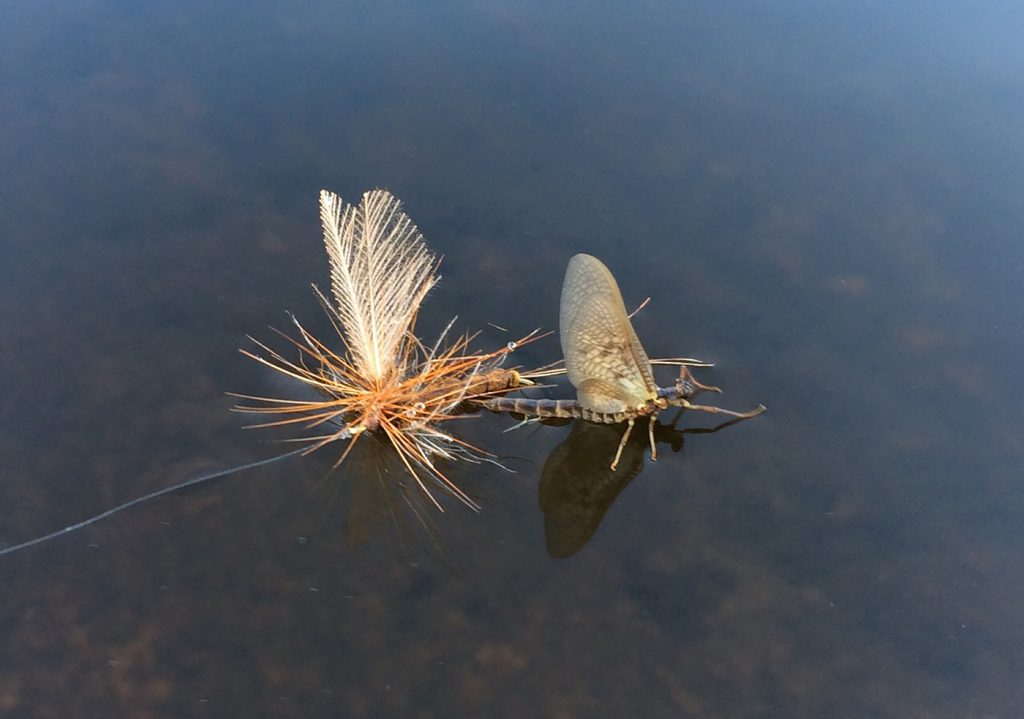
I suppose most fly fishers recognise the feeling? The expectation are big before any significant hatch, and the Vulgata-hatch in “the one” in Scandinavia. Not only do these big morsels lure the big trout to the surface, but the hatch and the spinner falls are great spectacles. The insects are big and easy to see and trout sometimes lose themselves in a feeding frenzy. As a fly fisher it would be a shame to miss the show.
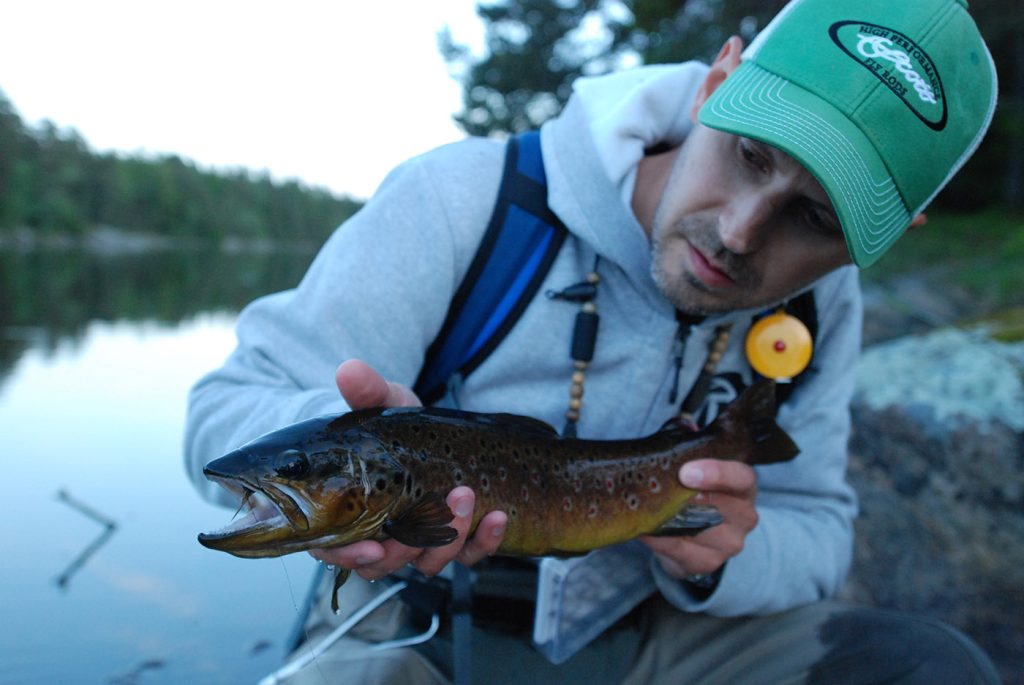
Sometimes in the middle of May the first insects appear in my local lakes in the Gothenburg-area. If you want to be prepared, be ready to go anytime between May 10th and May 31st. The safe bet is May 20th to May 25th, which is usually where the hatches peak in the lakes I fish. This varies from lake to lake, year to year depending on location, size and depth. If you know the different lakes well, you can extend the season by selecting between them, but only by a few days. With a bit of luck and the appropriate, local knowledge you can fish the hatch over 2-3 weeks.
A little rain and cloudy days often provide the best fishing. The rain and lower temperatures means that it takes a while for the freshly hatched insect to dry its wings and take off. The longer the stand on the surface, the easier a prey for the trout they are. Longer surface time brings up the trout faster.
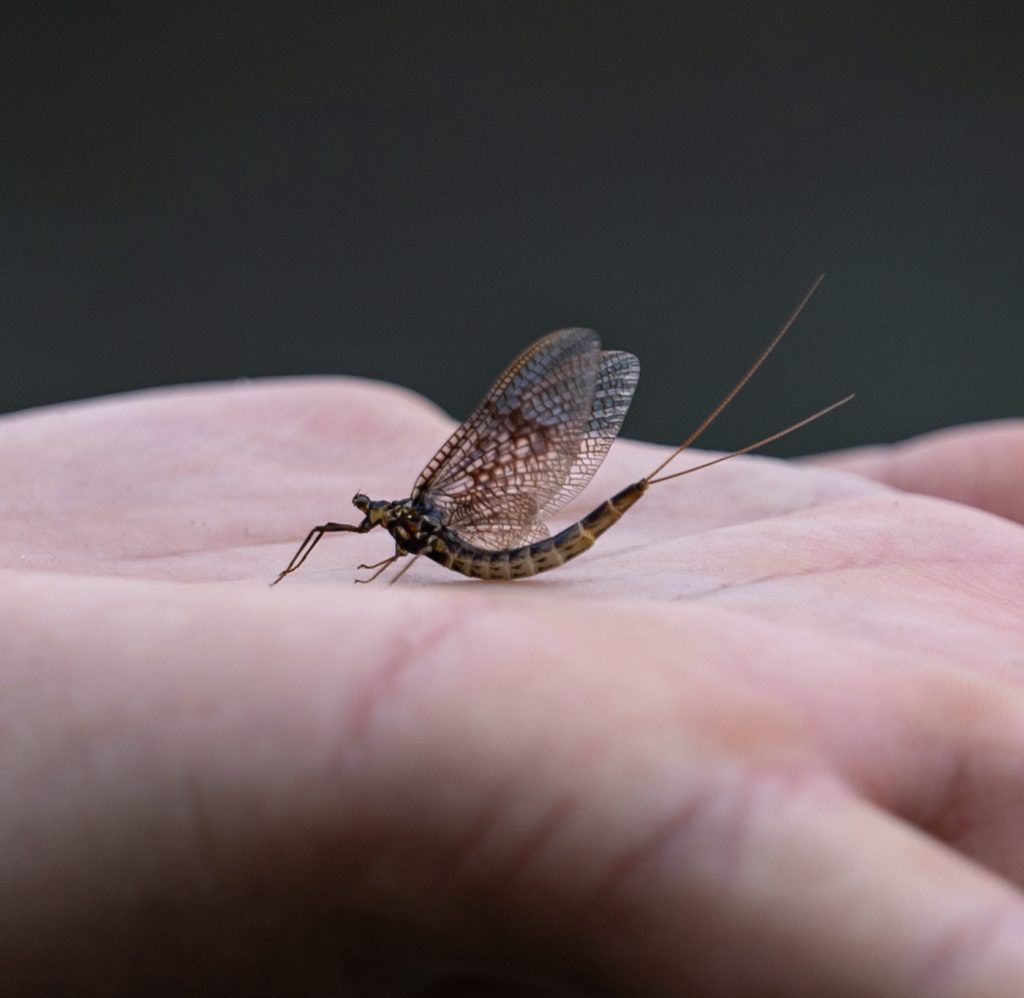
The hatches occur in intervals during the day. Suddenly flies will start to appear and sometimes just for a few minutes. In good conditions trout aen’t slow to follow and the fly fisher needs to be ready too. In the beginning of the hatch, fewer insects are on the surface making it easier for the fly fisher to present the fly correctly. The spinner fall is harder, because there are often thousands of insects on the water.

The spinner fall occurs after the insects have mated and the fly dying on the water. The fall itself is a spectacle to witness and on some evenings unbelievable quantities of insects are falling to the surface. Trout instinctively know that the dying insects cannot escape and thus provide an easy meal and rises are often in slow motion. Trout will often seek out concentrations of spinners and feast. The sheer amount of insects also mean that the it’s harder for the trout to pick out the fly fisher’s offering. The trout fourage very close to the surface, which narrows their window making it even harder to place the fly correctly. With precise casting in the right direction, several casts to the same fish will often secure a fantastic evening.
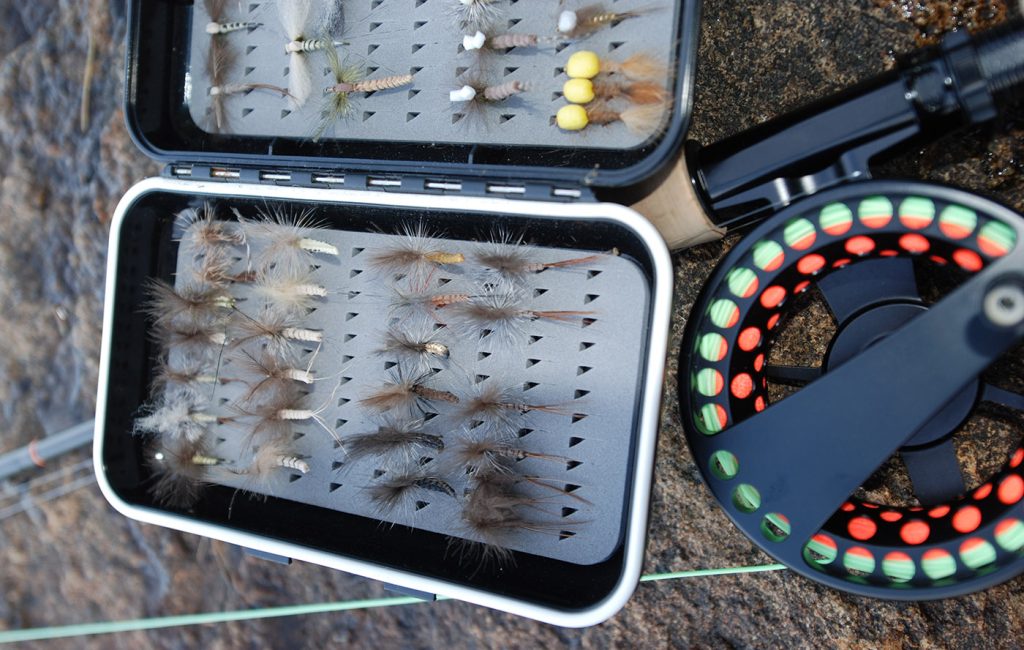
I prefer to fill my boxes with simple and fast-to-tie imitation. You will go through quite a lot of flies during the weeks of Vulgata-hatches. It’s also important to choose an imitation that sits correctly on the surface and my favourite imitation is a simple one of CDC wings, a parachute hackle, dubbed body and pheasant tail tails.
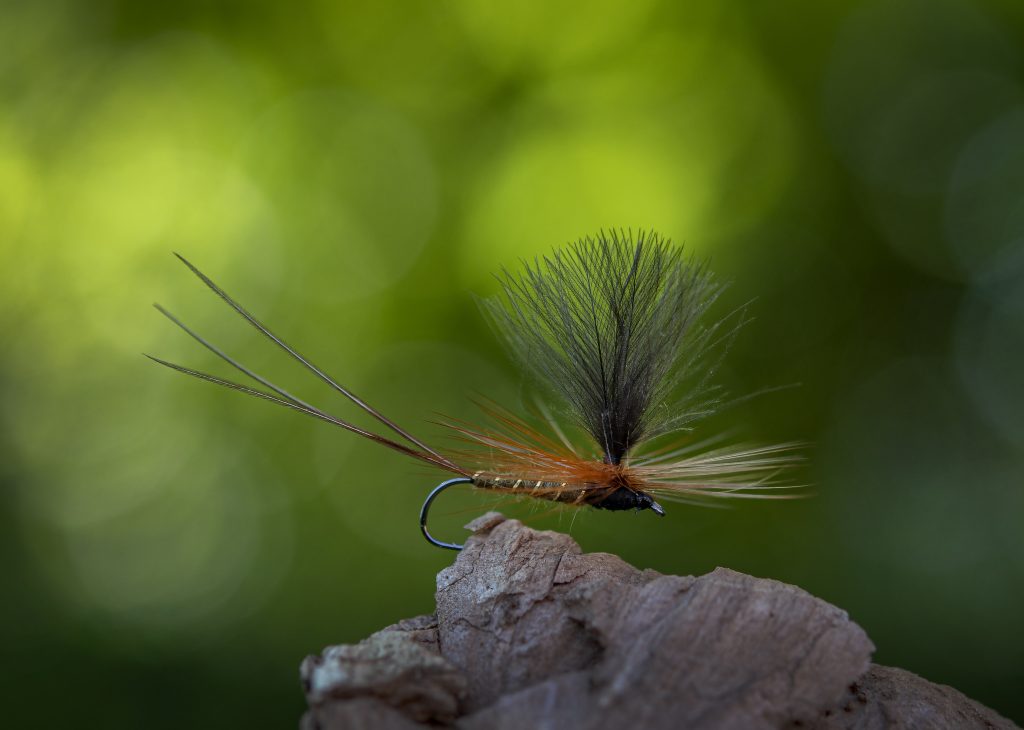
Vulgata Female by Andreas Larsson 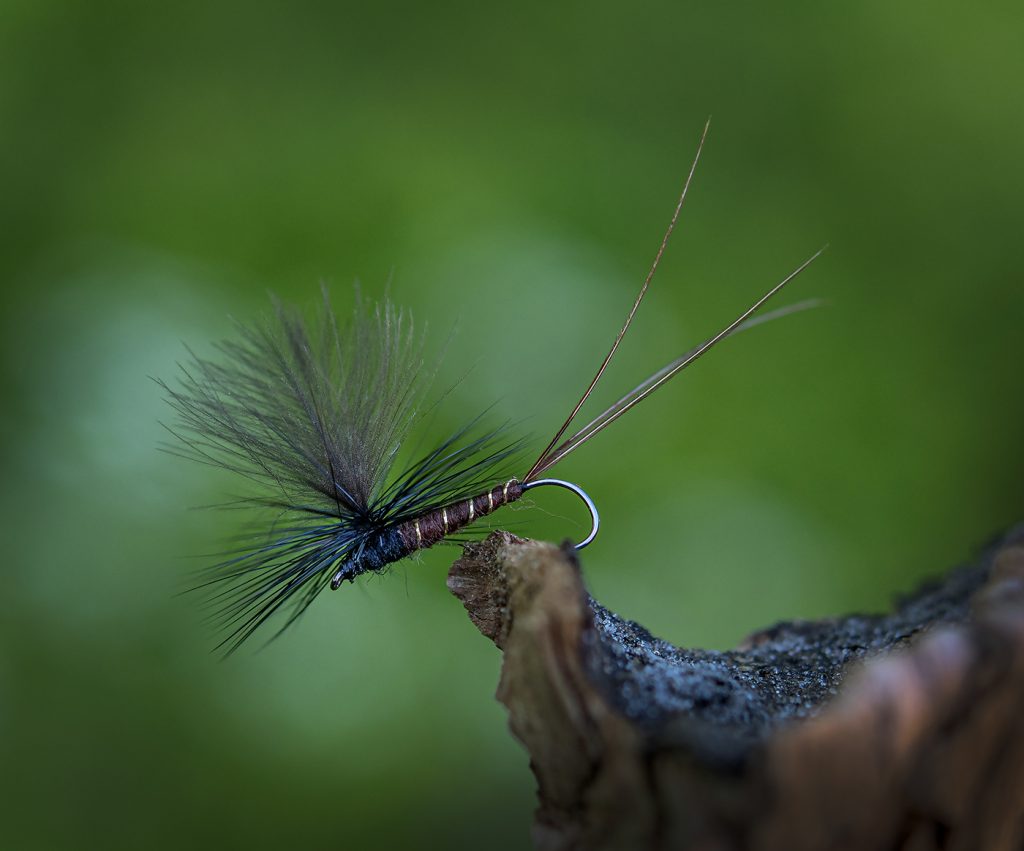
Vulgata Male by Andreas Larsson
Vulgata by Andreas Larsson
Hook: Ahrex FW538 #12
Tail: Pheasant tail
Body: Brown Flyrite dubbing
Ribbing: Black tying thread
Wing: Dark grey/black CDC
Thorax: Black Flyrite dubbing
Hackle: Black or brown cock hackle

If you spend some time observing the different lakes, when the hatches occur and where the trout prefer to feed, you can extend your season. Scout as much of the lake as you can to find the trout.Cast carefully and precisely and refrain from fishing if there’s no surface activity. When you find a feeding trout, take a while to observe and plan how, where and when to cast. Cloudy days with a misty rain are the best. Calm, sunny days mean fewer flies hatching and flies that leave the surface almost immediately. A pair of binoculars are essential. They give you a fast overview of larger areas, making it much easier to find surface feeding trout.

Thank you, Andreas, for sharing these insights and tips. It’s June 17th writing this and you might just be able to catch the last remnants of the hatches.
